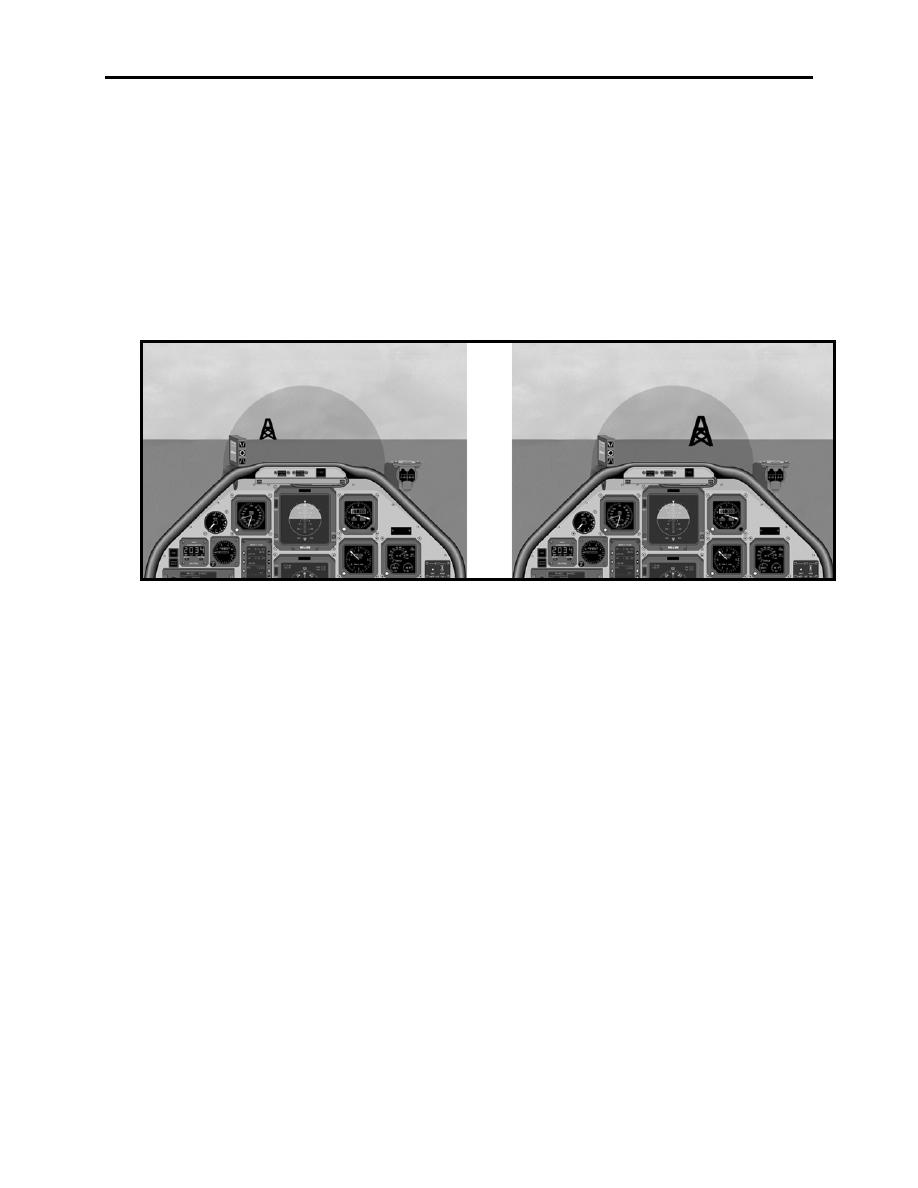 |
|||
|
|
|||
|
|
|||
| ||||||||||
|
|  CHAPTER FIVE
T-6A NAVIGATION
3.
Estimate when a turn back to planned course will cause the point to move to
approximately the 12 o'clock position. (Visualize the checkpoint on your course
line).
4.
Lead the turn back to course as necessary. When the maneuver is complete, you
are on the compensated heading on course.
5.
The following examples illustrate previously discussed example, the BDHI maneuver and
common errors associated with it.
Checkpoint in sight, within 30 of completed
Checkpoint ~ 10 right of nose, aircraft
heading aircraft is unknown distance off course
proceeding back towards course. Tower
will "drift" to the right
Figure 5-7 BDHI 01 Checkpoints
The checkpoint (a tower) is visible on the horizon, but is 5 to 10 left of the nose (Figure 5-7).
The first step is to call for a 30 turn to the left. It is not always necessary to allow the aircraft to
turn the full 30, but the initial call is always for the full 30-- have the pilot "steady up" after the
tower has "moved" to the opposite side of the nose, as in Figure 5-7. The call for this turn might
sound as follows: "Checkpoint in sight, turn left 180 for BDHI" as the point passes the opposite
side of the 12 o'clock position, "Steady up."
The pilot stops the turn on the "steady up" call after 20 of turn. The aircraft is now heading
towards the flight planned course. As the aircraft gets closer to the tower (and planned course),
the tower's position will drift to the right. In this example, the aircraft rolled out on a heading of
160, as only 20 of heading change put the tower 10 right of the nose. (Figure 5-8)
5-16
FLIGHT PROCEDURES
|
|
Privacy Statement - Press Release - Copyright Information. - Contact Us |